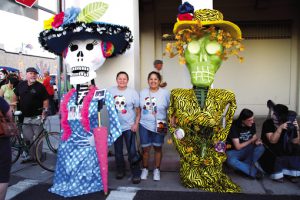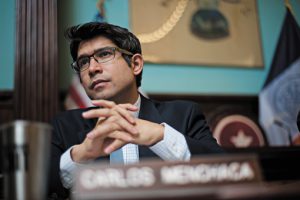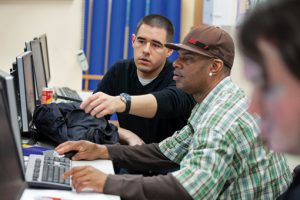Day of the Dead Celebrations Unite Food and Memory
This is one dinner party where the guests of honor are only there in spirit. But what a feast it is! On Day of the Dead, the holiday that starts at midnight on the day following Halloween, the souls of lost relatives are reunited with the living. And like so many other traditions, food is … Read more

Panorama
Stay up-to-date with the latest trends and events from around the hemisphere with AQ‘s Panorama. Each issue, AQ packs its bags and offers readers travel tips on a new Americas destination.

Innovators
Some of our hemisphere’s emerging leaders in politics, business, civil society, and the arts.
Finding Gaston—And Peru’s Gastronomic Heritage
Food is powerful. After breathing, we all have to eat. And food can bring people together for celebrations or in times of sadness. In Peru, food has become the glue that has held together a nation that experienced difficult times over the last forty years. And today food has made Peru one of the most … Read more
A Discussion about Lesbian Roles and Depictions in Mexico
LGBT cyber-activists took to the web last week to publically denounce Mexico City’s 3rd International Lesbian Festival. Through a communiqué posted on Facebook, nearly 20 LGBT organizations and collectives and around 50 individual signatories condemned the festival as a vehicle for perpetuating misogyny and machismo. They also criticized a number of authorities for vouching for … Read more

Student Debt in the Americas
The promise of upward mobility for Latin America’s new middle classes has led to swelling university enrollment rates, but also to growing debt.1 In Colombia, high school graduates enrolling in higher education rose from 24.87 percent in 2002 to 45.02 percent in 2012.2 Meanwhile, in 2011, 23 percent of 25- to 34-year-old Mexicans had attained … Read more

Academic Brain Drain
A recurrent theme in the immigration debate is how the United States can keep and attract the world’s brightest minds. President Barack Obama and others favor maintaining and perhaps even expanding the number of visas for high-skilled immigrants. In his 2013 State of the Union address, Obama said the U.S. needed to “attract the highly … Read more

Bridge Institutions in Higher Education
The United States and Latin America are both struggling to find ways to improve participation in quality education in the face of a labor-market skills gap. But all too often, policymakers, businesses and educators have looked to elite universities as a way of meeting those gaps. While important for high-end jobs, labor market and social … Read more

Higher Ed: Private Investors Get Into the Game
The combination of sustained economic growth in Latin America, a region-wide expansion of the middle class, and a newly competitive business environment has boosted demand for quality education, and stoked desires for alternatives. The alternatives are coming from a slew of new and lower-cost online courses. This innovation has produced a wave of private investment … Read more

Protest U.
Millions of students have taken to the streets across Latin America in recent years in protests that reflect an unprecedentedly broad mobilization of popular opinion. Following massive demonstrations led by secondary school students in 2006 in Chile, university students launched a series of protests in May 2011. Powered by a coalition of public and private … Read more

MOOCs in Development: Fad or Future?
Those following tech and continuing education news have been surprised by the rising popularity of Massive Open Online Courses (MOOCs).1 The basic promise for professionals in Latin America and the Caribbean is quite alluring: free online access to a world-class knowledge base. But questions remain. Will this new learning methodology last, or fade quickly once … Read more
Indigenous Enrollment
Since its formation in February 1971, the Consejo Regional Indígena del Cauca (Regional Indigenous Council of Cauca—CRIC) has made the education of young Indigenous Colombians one of its most important goals. The dream of creating an autonomous university for Indigenous youth was finally realized in November 2003—when the CRIC’s high council formally created the Universidad … Read more

Competitive Eating
Summertime in the U.S. typically evokes the image of barbecues featuring all-American fare. But for a group of unique, dedicated elite athletes, summertime food conjures up a chance at glory. Competitive eating was introduced in Coney Island on July 4, 1916, by Nathan’s Famous to determine who could ingest the most hot dogs within a … Read more

Innovators
Some of our hemisphere’s emerging leaders in politics, business, civil society, and the arts.


